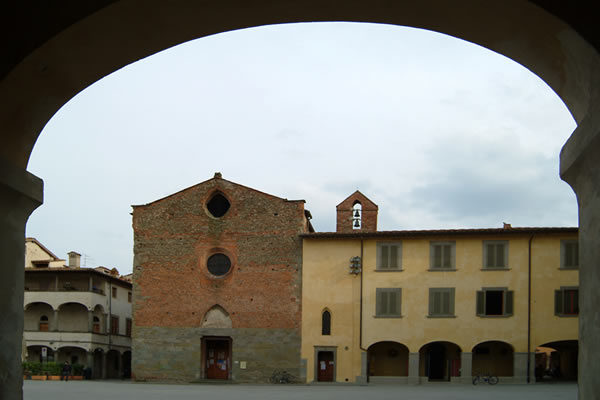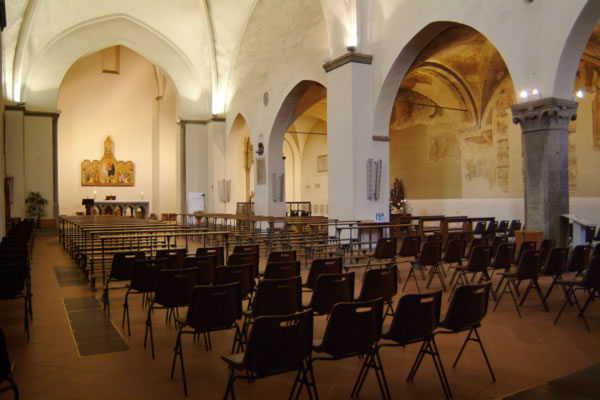The Church of San Lorenzo, that depends on the church of Cavriglia, dependent on Pieve di Cavriglia, existed before the foundation of Castel San Giovanni. After the incorporation of the castle, the church was frescoed and then modified several times and finally restored from the second half of the nineteenth century.
The mole is compact and bare, externally coated with sandstones until the height of the simple portal and continues in bricks. The interior consists of a wide nave plus the lower nave, communicating through four sixth-acute arches. Covered by cross vaults, hosts on the back wall of the presbytery an altarpiece by Giovanni del Biondo (Casentine of the Florentine school of the fourteenth century), that represents the coronation of the Virgin.
Various paintings from San Lorenzo are now preserved in the Museum of the Basilica, like the “Decollazione di San Giovanni” of Giovanni da San Giovanni. Very little remained of the frescoes of the naves: one of the best preserved is the Martirio of San Sebastiano of Masaccio’s brother, Giovanni Cassai called “Scheggia (the Shard)”.




